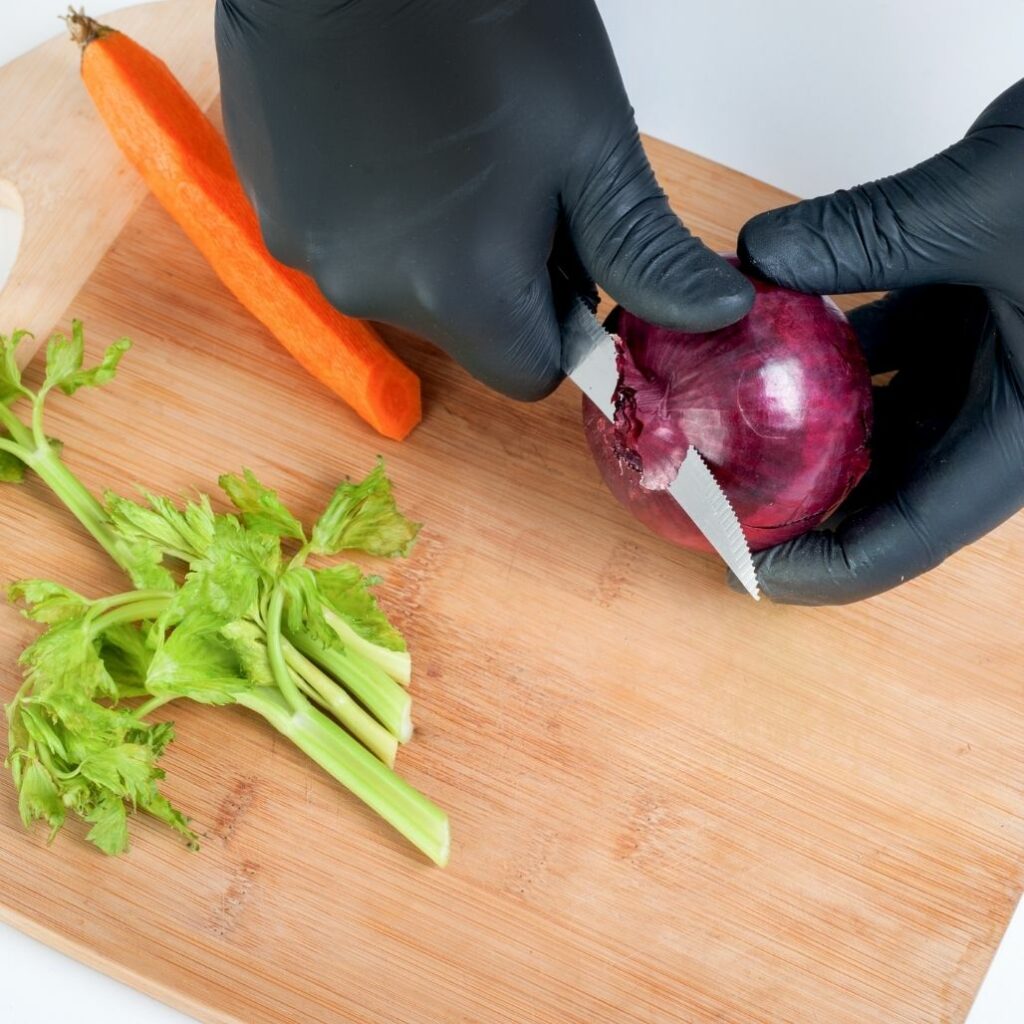A Guide to Changing Disposable Gloves in Food Service
The importance of food safety cannot be overstated, and disposable gloves play a pivotal role in ensuring this.
Proper usage of gloves can prevent numerous foodborne illnesses, which can be detrimental to both customers and the reputation of your food service business.
However, it’s not enough to merely use gloves; it’s essential to understand the correct protocols for changing these gloves to maintain the highest hygiene standards.

The Role of Gloves in Food Safety
Disposable gloves act as a protective barrier, preventing direct contact between the food handler’s hands and the food being prepared. This barrier is crucial in preventing the spread of harmful pathogens that can cause foodborne illnesses. However, it’s important to remember that gloves are not a substitute for proper hand hygiene. They’re an addition to it, reinforcing the protection against contamination.
Proper Donning of Disposable Gloves
Always ensure your hands are clean before wearing a new pair of disposable gloves. Wash your hands thoroughly to avoid contaminating the gloves with any pathogens on your hands. When putting on your gloves, touch them only at the cuff or opening to keep them free from contamination.
When to Change Your Gloves
Knowing when to change your gloves is a key aspect of food safety. Below are four critical scenarios when you should change your gloves:
Switching Tasks: It’s essential to change your gloves whenever you switch tasks. This includes tasks like taking out the trash or returning from a break. For instance, if you were handling raw meat and then switched to preparing vegetables, ensuring you change your gloves prevents cross-contamination.
Torn or Dirty Gloves: Damaged gloves can expose your hands to the food, leading to contamination. If your gloves are torn or dirty, it’s time to change them.
After Four Hours of Continuous Use: Gloves can harbor dangerous pathogens over time. Even if your gloves aren’t visibly dirty or torn, changing them after four hours of continuous use is recommended.
Touching Your Body: If you touch your hair, face, or any other body part, you must change your gloves to avoid contamination.
The Dangers of Reusing Gloves
Washing and reusing disposable gloves might seem cost-effective, but it comes with significant risks. Even after washing, gloves can still harbor harmful bacteria, leading to potential contamination.
Choosing the Right Gloves for Food Handling
Disposable gloves in food preparation typically comprise neoprene, latex, vinyl, or nitrile. Choosing gloves that are FDA-approved for use with food is crucial to ensure they’re safe. Read more about the best food gloves here.
Tips for Wearing Gloves While Handling Food
Remember to thoroughly wash, disinfect, and dry your hands before wearing gloves and between glove changes. If your gloves get damaged before removing them, wash your hands before wearing a new pair. Also, ensure to remove and re-wear gloves away from the food preparation area to prevent contamination.
The Risks of Not Changing Gloves
Not changing gloves when necessary can lead to cross-contamination and poor hygiene. This is particularly risky when handling raw meat and then handling other food items, as it can lead to the spread of harmful bacteria.
Additional Tips for Maintaining Food Safety
In addition to regularly changing gloves, there are other measures you can take to ensure food safety. This includes frequent hand washing, maintaining clean surfaces and utensils, and proper storage and cooking of food.
Conclusion
By following the guidelines outlined in this article, you can significantly enhance the safety and hygiene of your food service operation.
Remember, it’s not just about using gloves; it’s about knowing when and how to change them to ensure optimal protection against foodborne illnesses.
